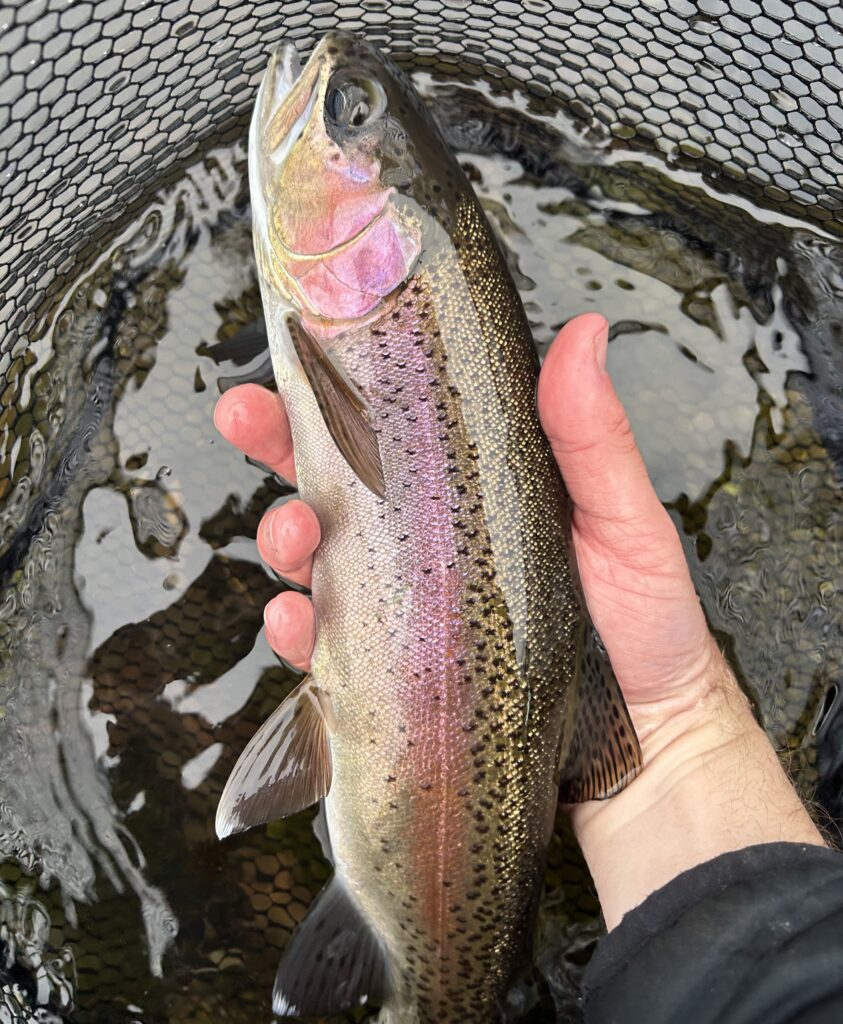A few hours ago I had no set plans to fish. Now after a quick blast through the post-Thanksgiving traffic on I-90, my minor battle with the mobile version of the Washington State fishing license vendor, and the unexpected laborious effort of squeezing into my frozen solid wading boots I’d left outside for days, I stood alone on a high bank overlooking a prime piece of urban trout water as my girlfriend’s car peeled out of the parking lot in the direction of the Spokane skyline. I may have been thousands of miles away from the last place someone had dropped me off to go fishing, but I was home.
There’s something I’ve always found grounding about an ad-libbed day on the water. When I first started fly fishing, this was an everyday occurrence. Whether it was a visit to my town pond or a family camping trip in the Catskills, each early outing was a complete experiment that filled the early chapters of my own mental “fly fishing 101” book with its results. When you get to the point where you develop your own intuition and can make informed decisions on a fishing situation, the days of blind trial and error become fewer. This is obviously a positive outcome, but I am always oddly delighted to get thrown into a hastily put together situation with a limited window of time to figure things out. These challenges are short lived and small, but they require a level of attention that we often stray from when fishing the same waters throughout the year.


Back in my days of bluegill hunting in suburban New Jersey, these trips were as easy as convincing a parent/guardian for a drop-off somewhere local while they ran errands. I’m not yet old enough to forget my childhood days of unstructured freedom, and I certainly remember when they came to an end. Everyone has their own struggles with understanding you’re not a kid anymore, and mine factored in the sudden realization that I would no longer have as much time to fish. Despite more friends holding the same interests and eventually owning my own car, fly fishing had now matured into something that had to fit into a schedule along with school, practice, and summer jobs. Tragic, right?
Luckily, this dilemma allowed me to develop one of the greatest skills an obsessed fly angler can have— Making a fishing trip appear out of thin air. There are three main guidelines to follow here: Don’t hesitate when you see a window of open time forming, have fishing gear on you, and possess the negotiating skills necessary to repair the relationships damaged from doing this too much. Forget any prowess you have with a rod and line, because this is where the real talent comes in. Welcome to the big leagues.
On this gray Inland Northwest afternoon, I had done the leg work perfectly. With my girlfriend meeting up with some friends in her hometown and an unspoken agreement that I wasn’t necessarily going to be adding much to their conversation, someone just earned a couple of open hours.
The Spokane River was cold, but my wading boots were colder. Standing in the water while I set up my leader allowed my hardened footwear to thaw out enough to tighten the laces and retie. The still air lingering over the city the last few days had inverted the local atmosphere, essentially freeze-drying the riverbank. Every bike path, root, and rock by the water access was covered with a thin layer of slippery frost that blended in well in the low light and fog. In addition to upping my chances of a nice concussion, I hoped the weather would bring fish in shallow and hide my approach from the elevated shorelines.
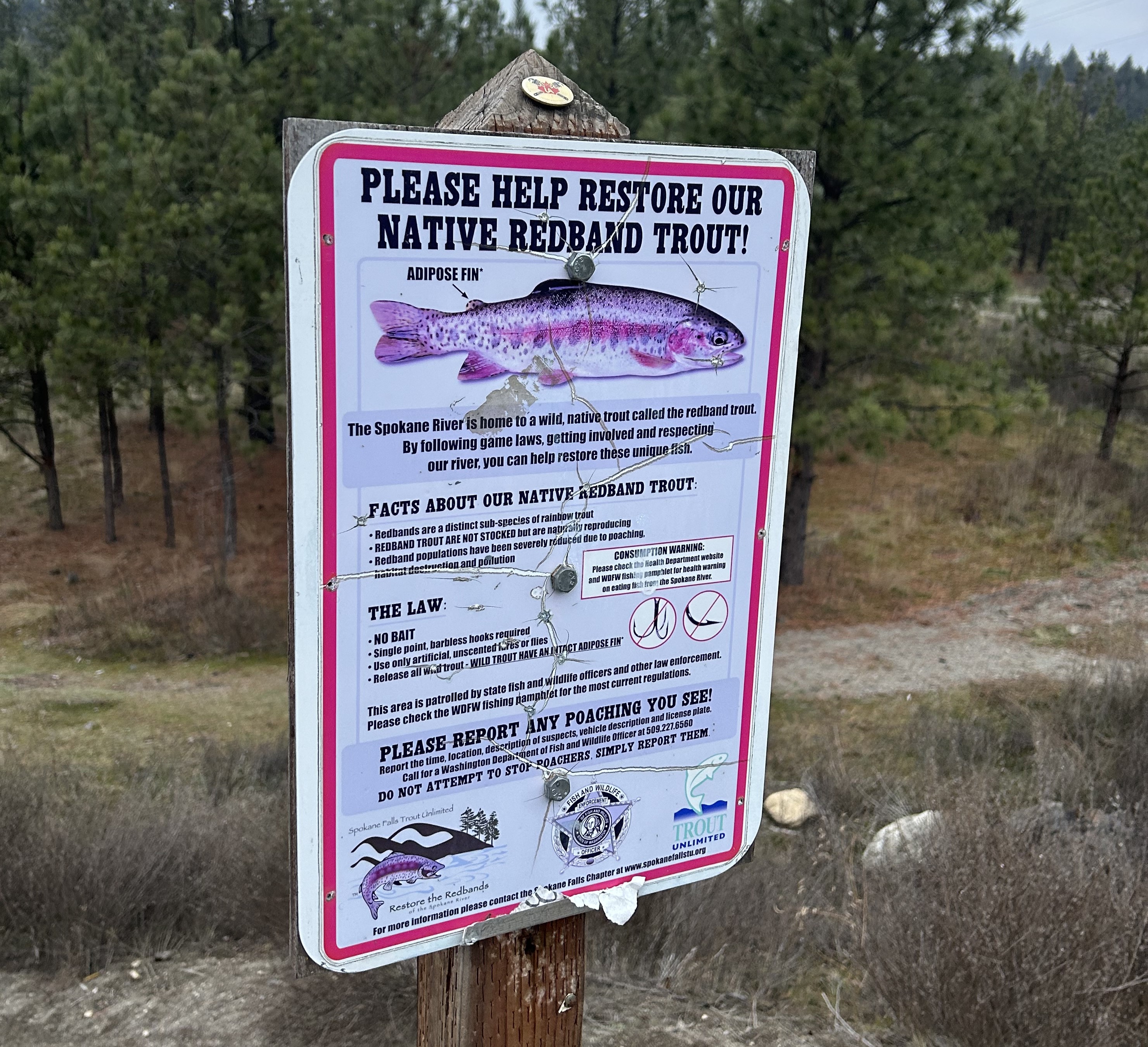

The Spokane also lays within the range of the Columbia Basin Redband, a rainbow trout relative native to inland areas from Oregon’s high desert to southern British Columbia. The species has been subjected to its fair share of threats from agricultural pollution and rising water temperatures, but a strong targetable population still exists within the city.
Urban native trout have a special place in my heart. Growing up in New Jersey, I put a lot of energy into pulling the wildest aspects out of my local manicured parks and chemically treated ponds and injecting them into my life. I’ve become someone who sees resiliency in nature, and I feel that there is not a better example of this trait than the continued existence of delicate animals in places so hostile to their existence. Encountering native trout in densely populated areas is almost always a unique and encouraging experience for those of us who look for them. It also saves me gas money.
The riffles I had seen upstream of the park’s access didn’t pan out. They were shallow and quick, tricky to nymph, and didn’t seem that productive anyway. I poked around a section of water spanned by one of the many high-flying footbridges you’ll find in Spokane. The piers cut the river into smaller, deeper channels that fell into slower moving buckets. There wasn’t much current here, so I casted my mono rig into the slack and let it pendulum back towards me. After a few dull bumps from the deep I finally connected with a decent strong fighting fish and slid my first redband of the day into the net.
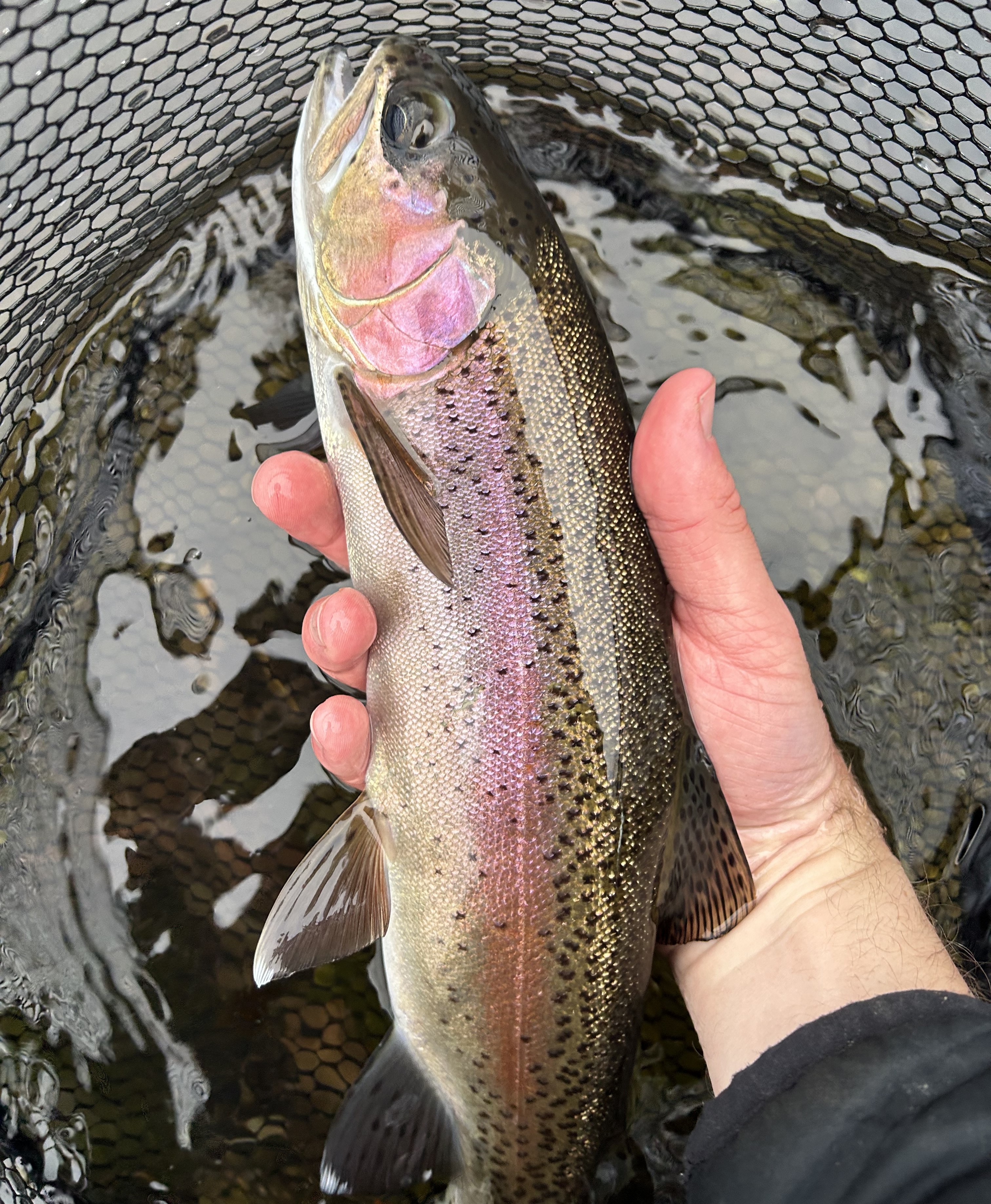

I pulled a couple more fish out of this section and then moved on. I assumed there were probably a few more trout I could find by staying below the bridge, but I was really hoping to check out more of the nice-looking water I could now see downstream. Fishing on a time crunch isn’t ideal, especially in winter conditions requiring slower presentations and subtle eats. When I’m on a new river however, my adventurous side usually wins and I sacrifice a few casts at each spot for more river miles.
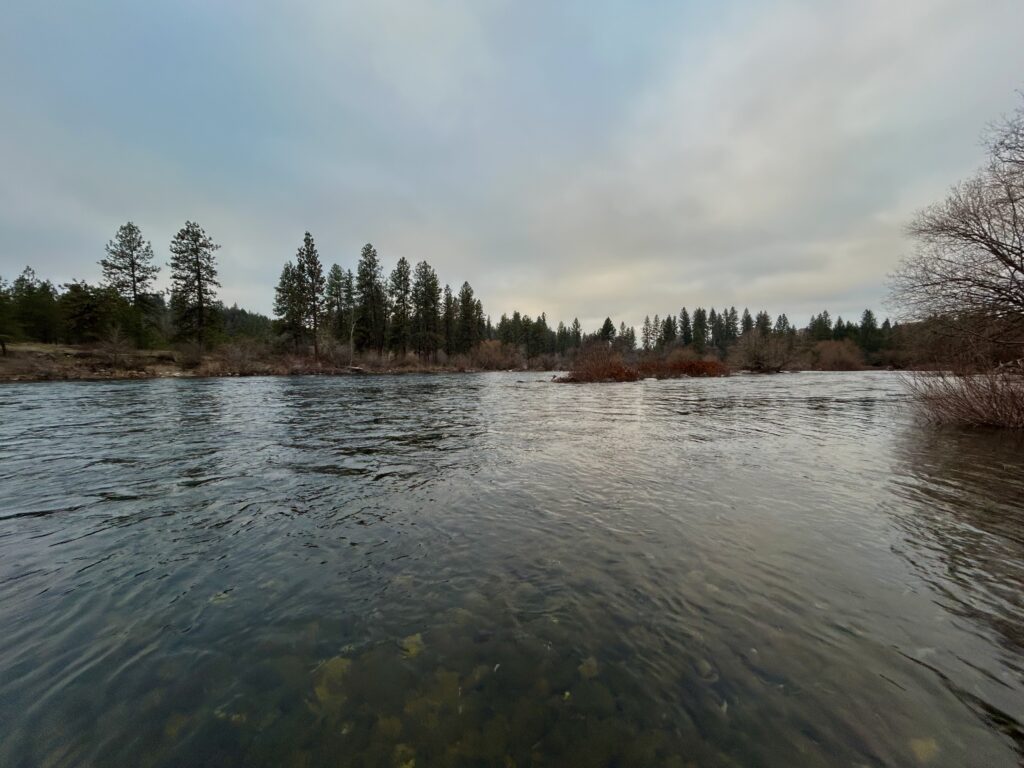

This section of the Spokane braided in and out of islands and gravel bars, making for good wading access and plenty of holding areas. I continued to pull fish out along the way, including from some deeper riffles that ended up being way better than the ones I initially saw on satellite. All the redband I caught seemed fat and happy. If it wasn’t for the high rises protruding into the slate skies around me, I could’ve been convinced I was back on the lower Deschutes near my home base back in Bend. As far as average size goes, it was probably my best day ever trout fishing in a city.
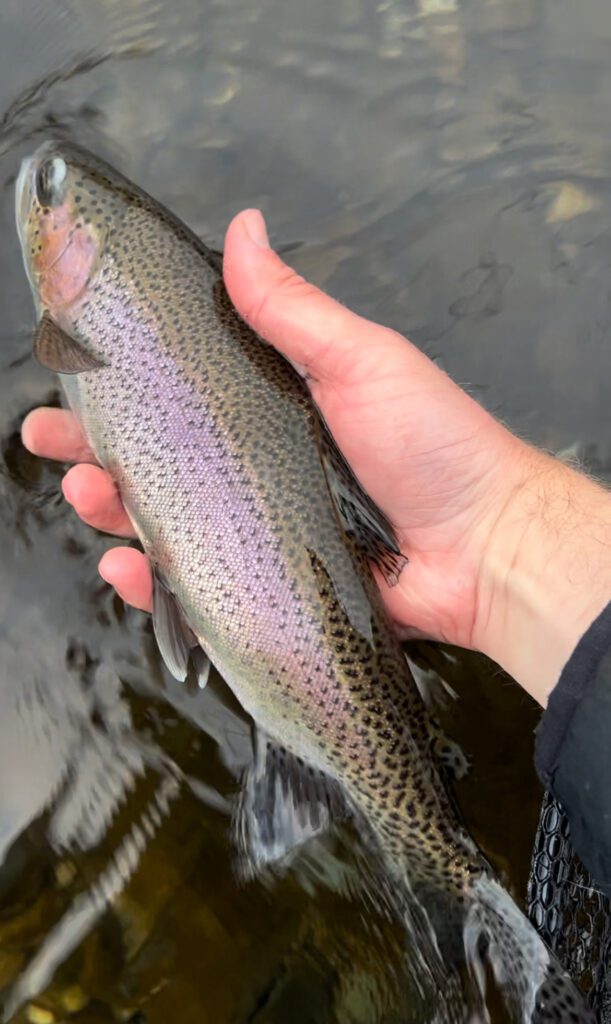

After a solid two hours, I got the text that my ride was here. One more rule I’d add to the above is that when fishing on time that’s not entirely your own, you should come when you’re called.



